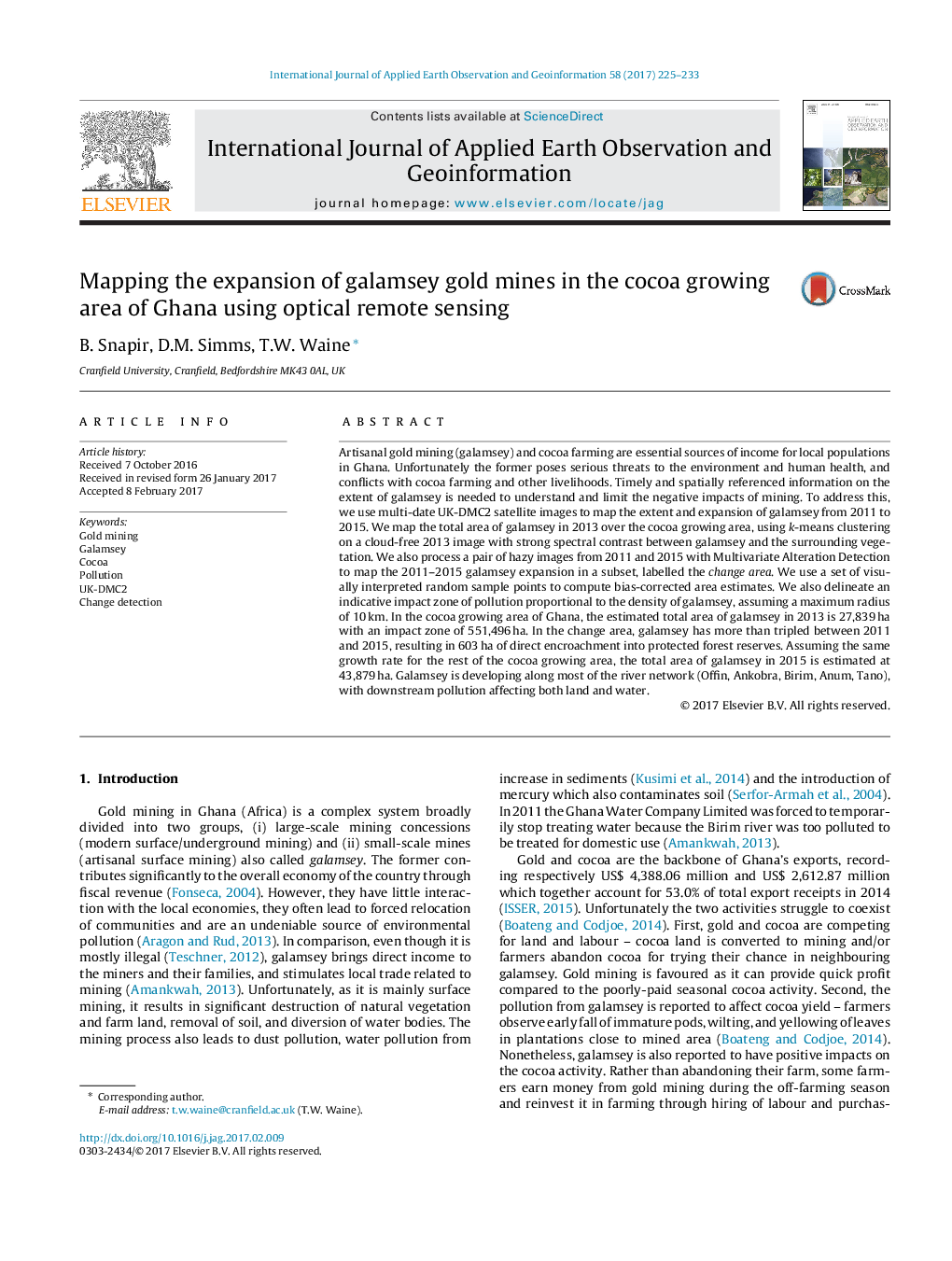| Article ID | Journal | Published Year | Pages | File Type |
|---|---|---|---|---|
| 5755462 | International Journal of Applied Earth Observation and Geoinformation | 2017 | 9 Pages |
Abstract
Artisanal gold mining (galamsey) and cocoa farming are essential sources of income for local populations in Ghana. Unfortunately the former poses serious threats to the environment and human health, and conflicts with cocoa farming and other livelihoods. Timely and spatially referenced information on the extent of galamsey is needed to understand and limit the negative impacts of mining. To address this, we use multi-date UK-DMC2 satellite images to map the extent and expansion of galamsey from 2011 to 2015. We map the total area of galamsey in 2013 over the cocoa growing area, using k-means clustering on a cloud-free 2013 image with strong spectral contrast between galamsey and the surrounding vegetation. We also process a pair of hazy images from 2011 and 2015 with Multivariate Alteration Detection to map the 2011-2015 galamsey expansion in a subset, labelled the change area. We use a set of visually interpreted random sample points to compute bias-corrected area estimates. We also delineate an indicative impact zone of pollution proportional to the density of galamsey, assuming a maximum radius of 10Â km. In the cocoa growing area of Ghana, the estimated total area of galamsey in 2013 is 27,839Â ha with an impact zone of 551,496Â ha. In the change area, galamsey has more than tripled between 2011 and 2015, resulting in 603Â ha of direct encroachment into protected forest reserves. Assuming the same growth rate for the rest of the cocoa growing area, the total area of galamsey in 2015 is estimated at 43,879Â ha. Galamsey is developing along most of the river network (Offin, Ankobra, Birim, Anum, Tano), with downstream pollution affecting both land and water.
Related Topics
Physical Sciences and Engineering
Earth and Planetary Sciences
Computers in Earth Sciences
Authors
B. Snapir, D.M. Simms, T.W. Waine,
